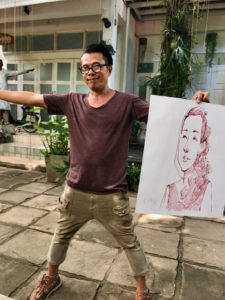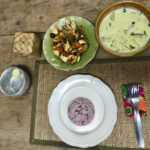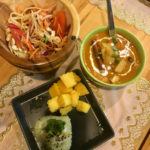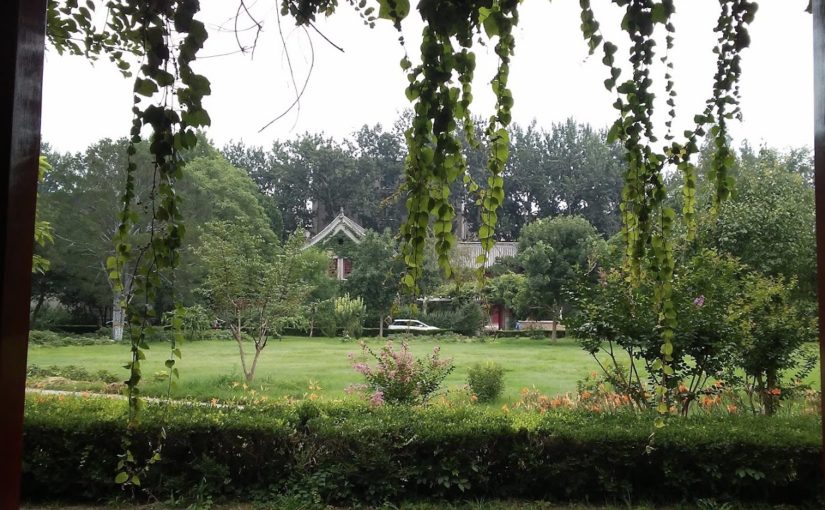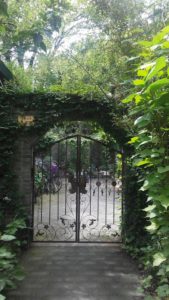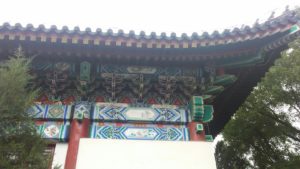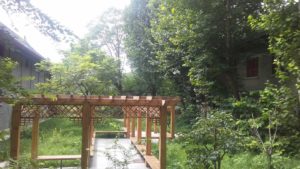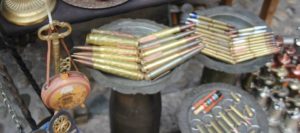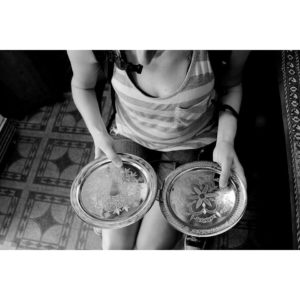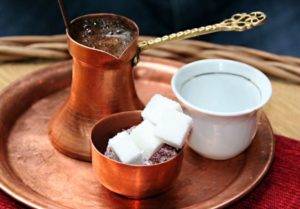I have saved this post for the end because I would like to use it to talk about what I am studying, why I am studying it, and why I have chosen Bosnia. It may seem odd to have left this for last, instead of leading with it, but I wanted to make sure I was able to speak about the future direction of my research.
As a PhD student at the Kroc Institute, I am pursuing a joint degree in Sociology and Peace Studies. I am entering my second year, and have decided to focus my research on the following question: How do states use monuments and public commemoration ceremonies to craft narratives on conflict? I am particularly interested in studying cases in which conflict termination is the result of negotiated settlement rather than on-sided victory. In these contexts, the lack of a clear “winner” means that no side is able to unilaterally impose their narrative conflict on the other. Often, the result is that in ensuing years formerly warring parties vie for the status of “victim.” I contend that these contested narratives are embodied in memorials, and that they simultaneously reflect and perpetuate these contested narratives.
Most adults living in America today know little about Bosnia beyond what happened there in the 1990’s; for a very brief overview of this conflict please see my post entitled Bosnian Bridges. And I hope that from the description of my research interests, it will now be clear why Bosnia provides a compelling context in which to explore questions related to my dissertation question. I would like to further reinforce this point by providing one brief example from my experiences this summer.
The following picture is of a plaque that can be found immediately to the right of the entrance to the national Library. It is about 6 ft high, and anyone wishing to enter the library can’t help but see it as they walk through the doors. For those who do not speak English, the same plaque can be found in Croat/Bosnian, on the left:
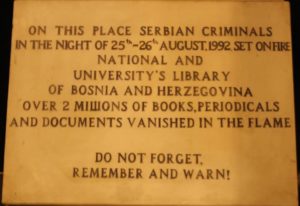
Though technically an accurate account of who set the fire, it contains highly inflammatory language. Many in the Serb community would contest the label of criminals, instead referring to themselves as combatants. These people would also be offended by the implication that the destruction of the library was an attempt to eradicate Bosnian culture. They would argue that the Serbian army has legitimate reasons to believe that the library was being used by enemy combatants as a strategic resource. For they reason, they would argue that it represented a legitimate military target. Thus, this monument represents just one example of the ways that monuments are used to strategically communicate messages about who should be given the label aggressor, who should be considered a victim, and how specific events should be remembered.
Because of the SLAP program I have been given the opportunity to study abroad in the place that I will be conducting dissertation research. I now possess rudimentary language skills that will at least ensure that I don’t starve during my year of research. I have also been able to make valuable contacts, and will continue to stay in touch with both my language professor Asmira, and my peer tutor Aziz. Thank you to the University of Notre Dame, and to the generous donors that made this possible.


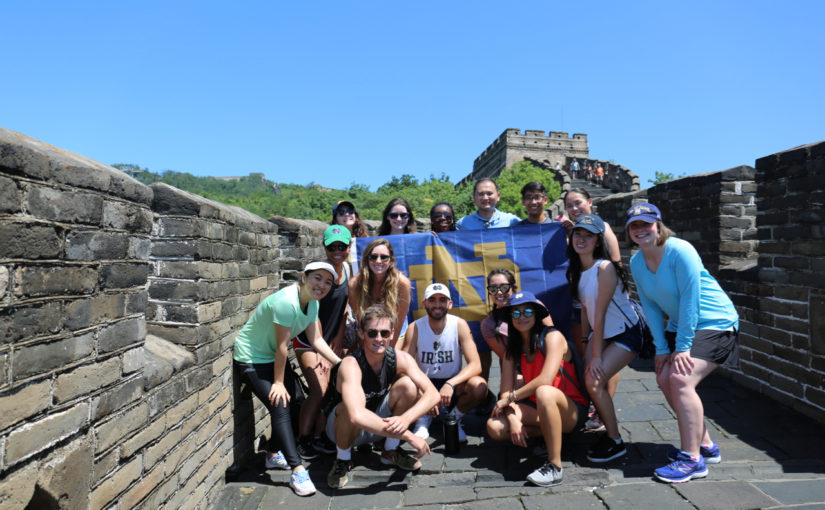
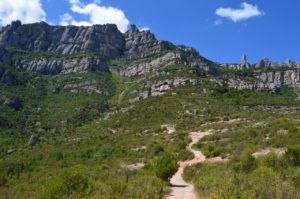
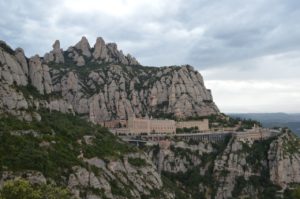
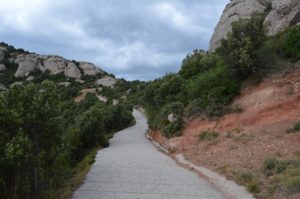
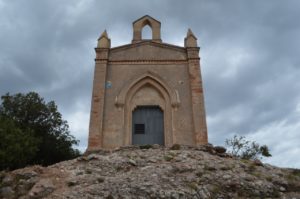
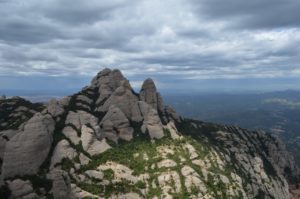
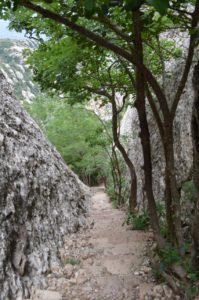
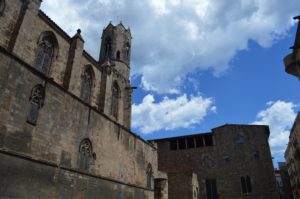
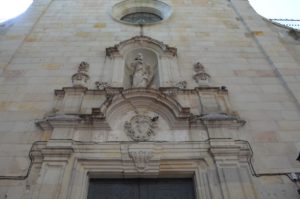 In the labyrinth, stone-paved streets of
In the labyrinth, stone-paved streets of 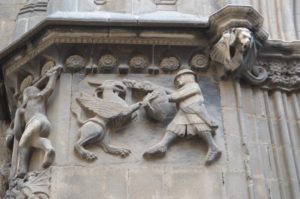 Nicolas, the small hidden church in which Antoni Gaudi prayed every day. You can find an archive housing letters from Christopher Columbus to Queen Isabell and King Ferdinand as he undertook his journey to the New World. You can find the lesser known Fredric Mares Museum, home to over 3,000 works of sculpture from all periods in human history.
Nicolas, the small hidden church in which Antoni Gaudi prayed every day. You can find an archive housing letters from Christopher Columbus to Queen Isabell and King Ferdinand as he undertook his journey to the New World. You can find the lesser known Fredric Mares Museum, home to over 3,000 works of sculpture from all periods in human history.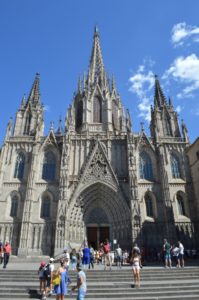 Although named
Although named 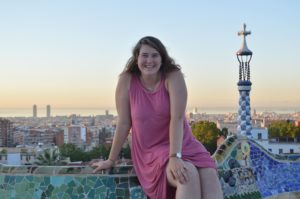

 For example, I was unsure about social etiquette regarding monks. I visited many temples and regularly encountered monks. I had read that females are forbidden to initiate contact with monks. I made friends with an older Thai woman who introduced me to 6 young monks. They were all learning English and were eager to speak with me, but very shy. I was very nervous to talk with them too, and also to say things incorrectly, or disrespectfully in Thai. I soon realized that we were sharing the same fears. It was a great experience to exchange words and ideas with them. It simply required a courageous act to get it going. (I am now friends with a monk on the Line app!)
For example, I was unsure about social etiquette regarding monks. I visited many temples and regularly encountered monks. I had read that females are forbidden to initiate contact with monks. I made friends with an older Thai woman who introduced me to 6 young monks. They were all learning English and were eager to speak with me, but very shy. I was very nervous to talk with them too, and also to say things incorrectly, or disrespectfully in Thai. I soon realized that we were sharing the same fears. It was a great experience to exchange words and ideas with them. It simply required a courageous act to get it going. (I am now friends with a monk on the Line app!) 